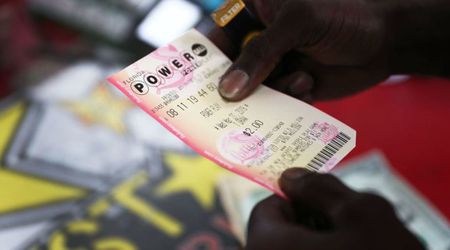Aunt on deathbed tells nephew to look 'under her sewing machine' to find a $25 million secret

A dying aunt from New Jersey left her nephew a treasure. On her death-bed, Carl Sabatino's aunt told him to check under her sewing machine. When Sabatino looked, he found an old painting there. When he looked closely, he realized that it wasn't just a painting but a potential Pablo Picasso original, worth millions.
1/🆕 We're happy to introduce you to 'Woman in a cape' by Spanish artist #PabloPicasso (1901), this week's release of our series of #𝑺𝒑𝒂𝒏𝒊𝒔𝒉𝑨𝒓𝒕𝒊𝒏𝒕𝒉𝒆𝑼𝑺. READY??
— SPAIN arts & culture (@spaincultureus) June 1, 2022
—
📍#ClevelandMuseumOfArt
#Picasso pic.twitter.com/S2poQCCOkE
A treasure under the sewing machine
Before Jenny Verastro of Staten Island, New York, died in 2004, she told her Sabatino to check under her sewing machine. He told NBC that “it just came flying out, literally in my lap. And I began to cry."

He recalled seeing the painting of the fuzzy lady in his childhood, hanging at his uncle's house. He shared that his uncle had bought the piece for $10 in London while serving as a soldier in World War II. Upon close examination, Sabatino found out that it was a recreation of Picasso’s “Woman with a Cape,” which had been on display at the Cleveland Museum since 1956.

When he took the copy to an executive of a New York auction house she dismissed it saying that it was nothing but a $10 poster. However, Sabatino wasn't convinced, so he dug deeper.
Going from $10 to over $30 million
Sabatino did extensive research and found out that during Picasso's time in Paris, in 1936, he experimented with a fine art photographic technique called 'gum bichromate'. As per NBC, gum bichromate combines photographic techniques and original coloring with pigments to create a new form of artwork. Sabatino believed that Picasso duplicated the "Woman with a Cape" to test the method, and the piece his uncle bought was that very copy.
He took to painting to Dr Kenneth Smith, president of the Center for Art Materials Analysis in Westmont, Illinois, for examination. His team extracted small amounts of pigment from the artwork and found that they were consistent with the place and time that Picasso would have produced the copy.
Smith also found a partial right thumbprint on the side of the work that could be of Picasso himself. Sabatino then took the painting to Richard Beaulieu, an internationally known Picasso expert and art appraiser. After examining the painting and the scientific evidence, Beaulieu was convinced that it was original. "It was the real deal," he told Inside Edition.
The expert estimated that considering the paperwork, forensics report, and the signature of the artist, the painting could be worth millions. However, what sets the piece apart is the thumbprint, and he speculated that if it is indeed of Picasso, the piece could sell for anything between $25 million to $30 million. This was back in 2015.

Realizing the true value of the piece, Sabatino safeguarded the artwork in a fireproof case and placed it in a safe location in the tri-state area. He called the artwork redemption for his working-class uncle and aunt who struggled to make ends meet but always loved the arts. Finally, in 2019, after 15 years of its discovery by Sabatino, the artwork was officially verified and appraised for a whopping $25 million by Sheldon Fine Art. It then went up for sale through the New Port Art Gallery, The Providence Journal reported.
This article originally appeared 2 months ago.























